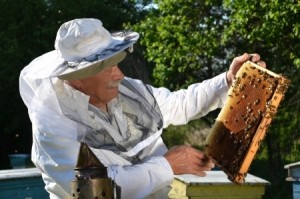
Storms that have been rolling in off the Pacific, helping to fill reservoirs and recharge groundwater, may be a challenge for almond growers should they coincide with the upcoming almond pollination season.
The almond bloom is expected to be “normal to a little ahead of normal,” says Bob Curtis, director, Agricultural Affairs, Almond Board of California, increasing the risk of unfavorable weather conditions just when bee activity is necessary to pollinate this year’s crop.
Wet weather during bloom, which typically occurs from mid-February to mid-March, is not unusual, according to Curtis, and there will be windows of opportunity with favorable conditions when bees can fly and pollinate the crop.
When Bees Fly
Favorable conditions for bee flight are defined as ambient temperatures above 55 degrees F, wind less than 15 mph and no rain, explains Dr. Franz Niederholzer, farm advisor for Sutter, Yuba and Colusa counties. “The more bee hours in the orchard, the better,” he says. “If conditions are hazardous for bees, they won’t be out flying; if it is cold, they will stay home warming the hives and protecting themselves and the brood.” He adds, “The weather has to be warmish and fairly still, and we usually get many of those days. It’s remarkable how much pollination can take place in very little time when the weather is good.”
Wet weather at bloom, though, favors fungal infections of the flowers, which threaten the viability of the almond crop and may require fungicide sprays. “What’s best for the bees is no spraying,” Dr. Niederholzer says, “but you have to spray to protect blooms.” The Almond Board’s “Honey Bee Best Management Practices for California Almonds” (Almonds.com/BeeBMPs) includes strategies for protecting honey bees while also protecting the crop. The most important strategy is to spray fungicides only after bees have removed all the pollen for the day, which occurs by mid- to late afternoon or evening.
Only One Insecticide
With one exception, growers should also limit spray materials in the tank to just fungicides, avoiding tank-mixing with insecticides. The exception is the insecticide B.t. (Bacillus thuringiensis). B.t. is documented to be safe for both adult and immature (brood) bees. Application of any other insecticides during bloom should be avoided.
Should rain and field conditions limit access, growers also have the option of using newer fungicide chemistries that feature more flexible timing. This is because they are locally systemic and provide reach-back activity against a recent infection. These newer fungicides can be applied at pink bud to provide disease protection, and under low disease pressure conditions, this may be the only bloom spray needed.
With higher disease pressure, two sprays may be needed: the first at pink bud and then again at 50 to 80% bloom.
To download a high-resolution file of the “Honey Bee Best Management Practices for California Almonds,” click here.









